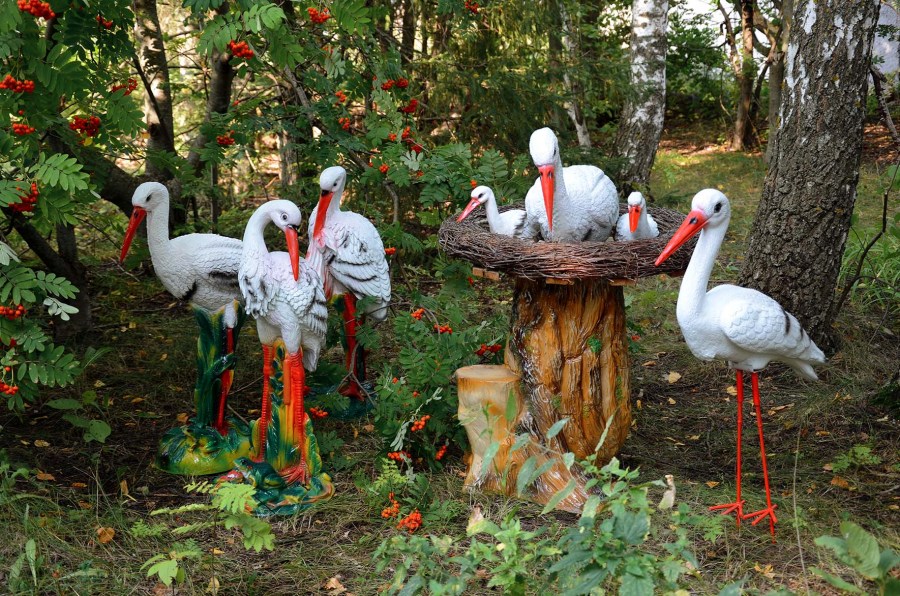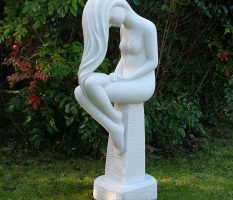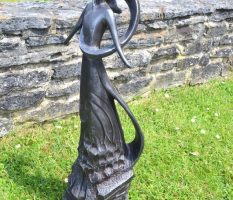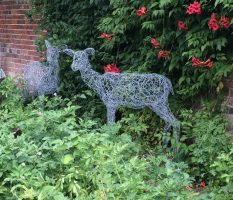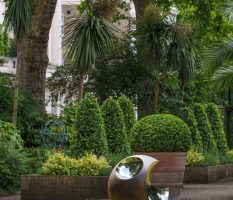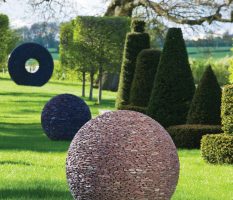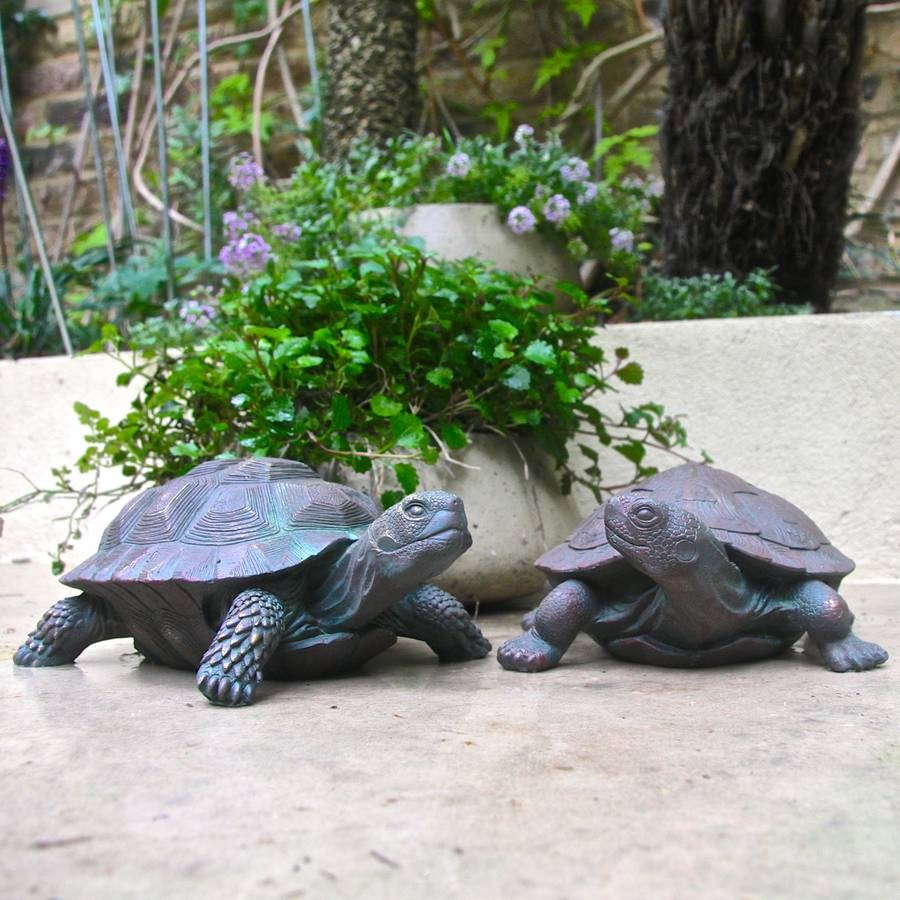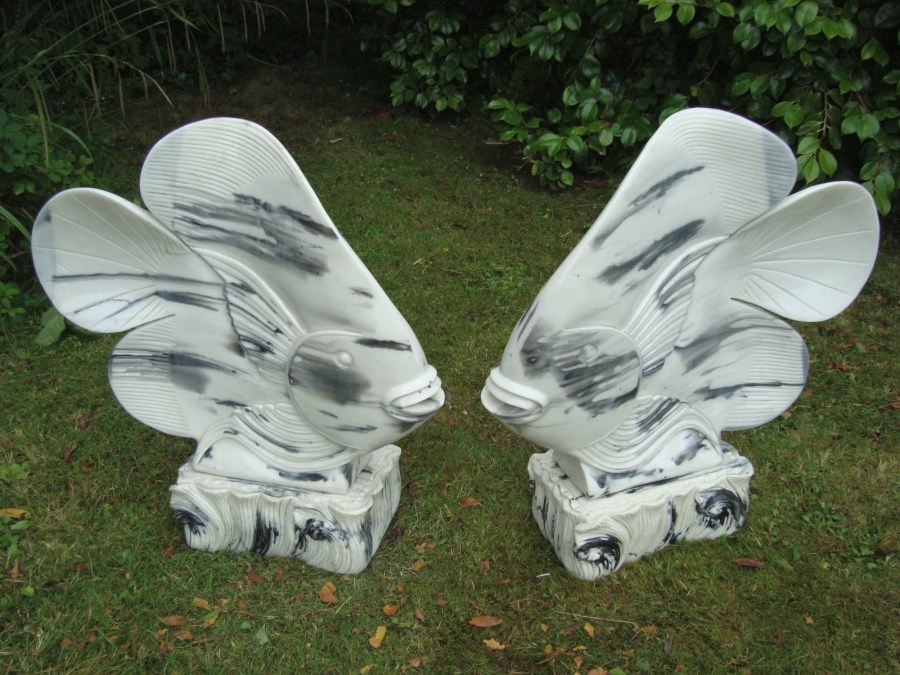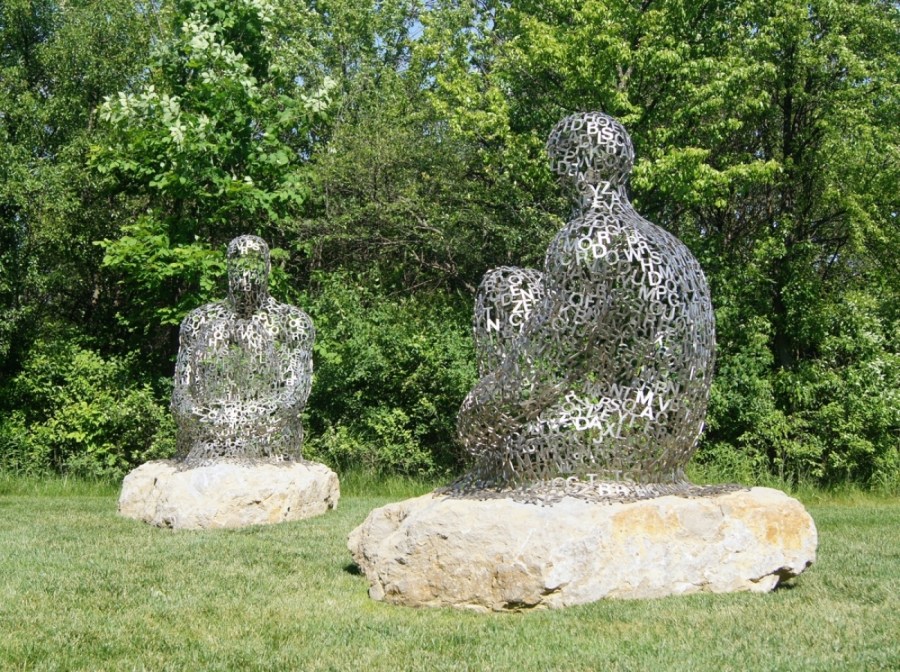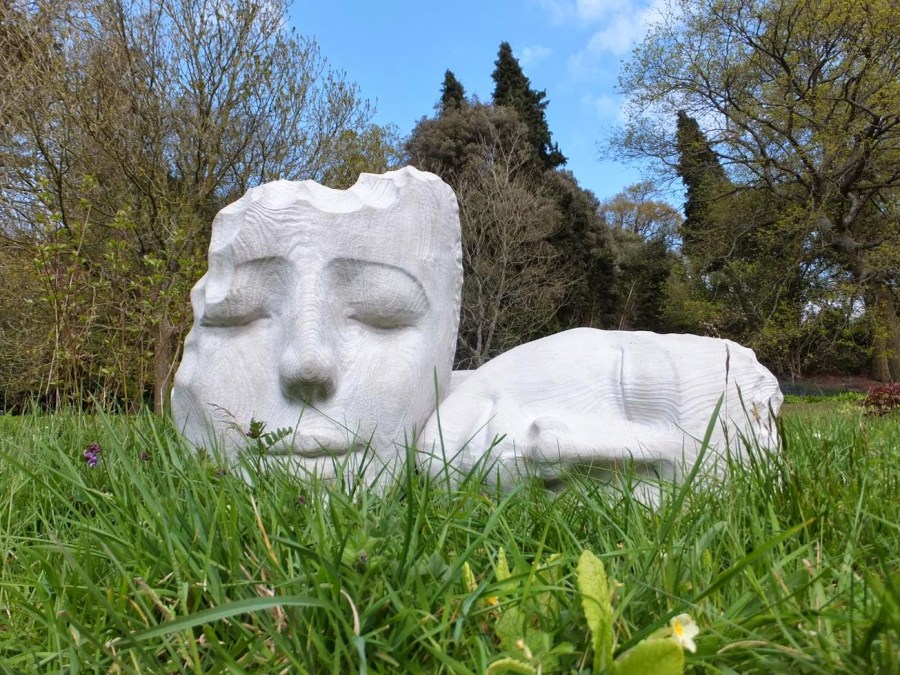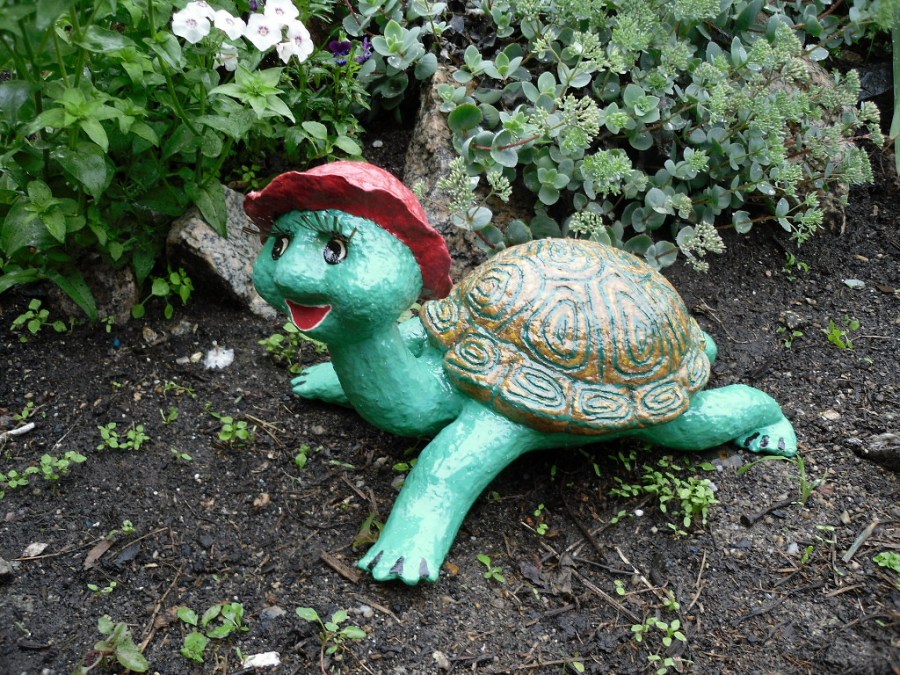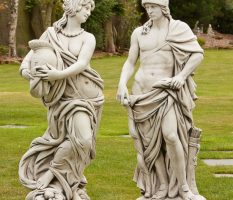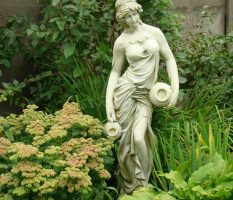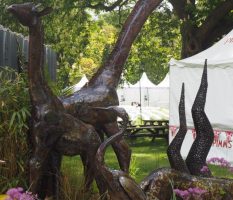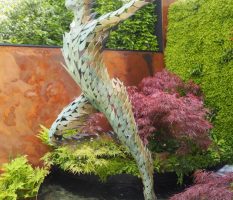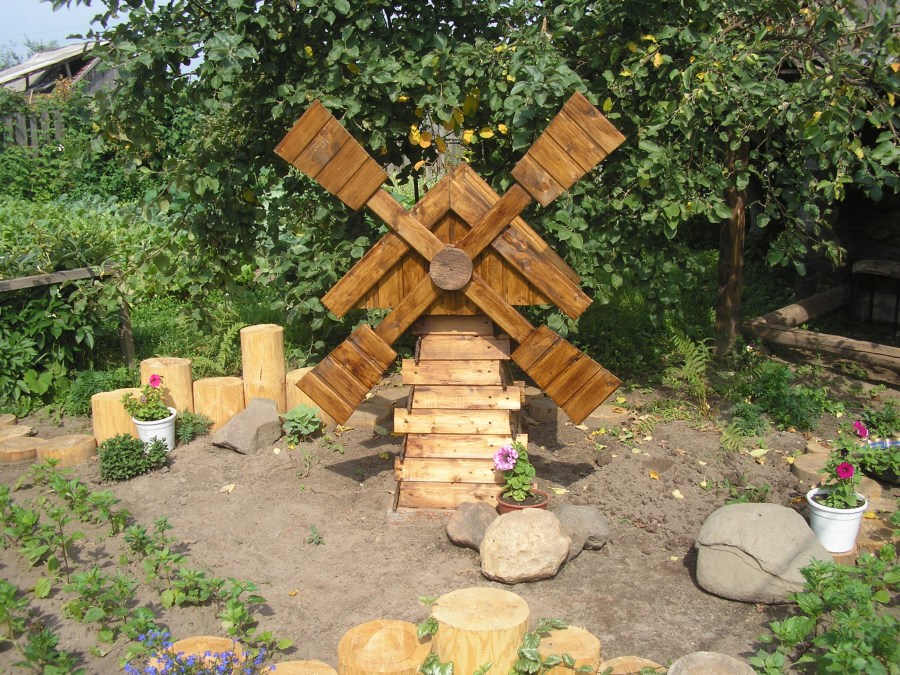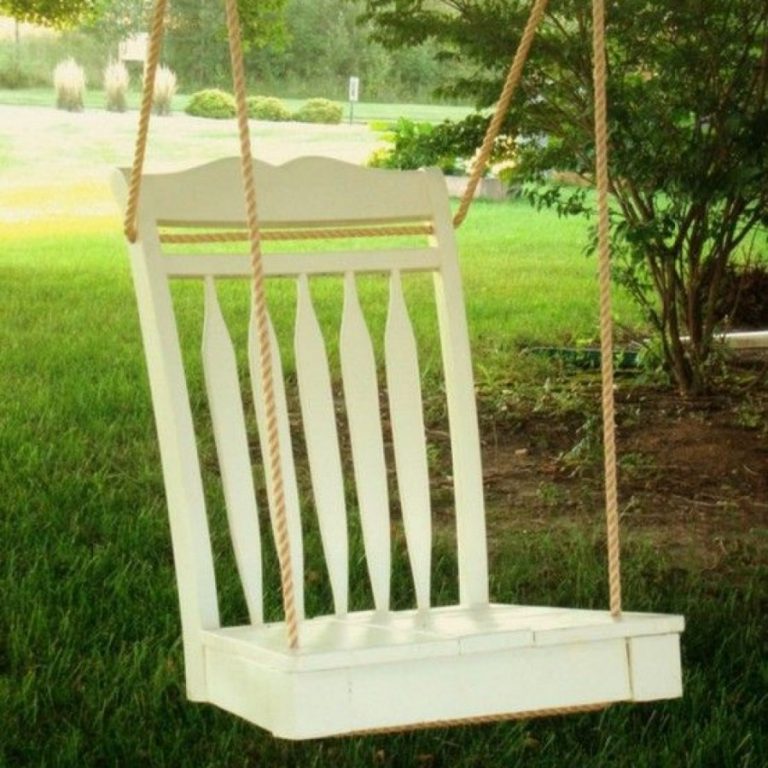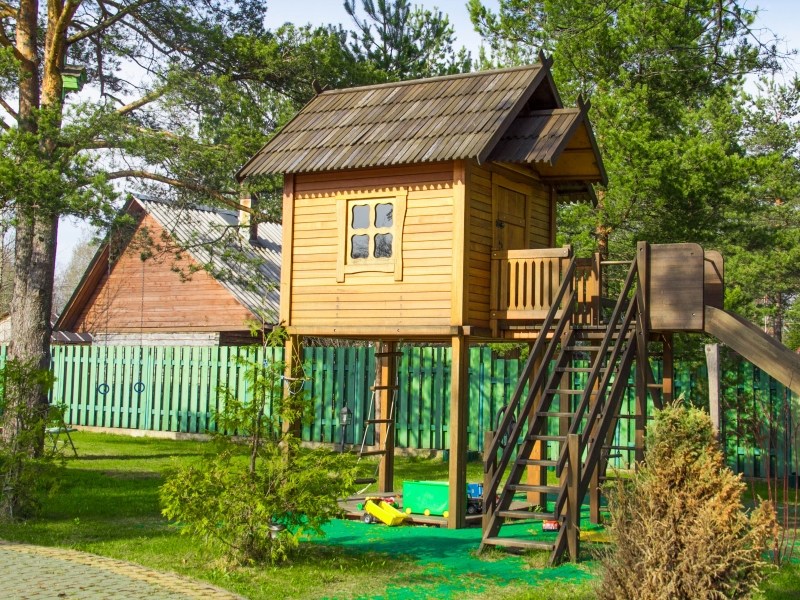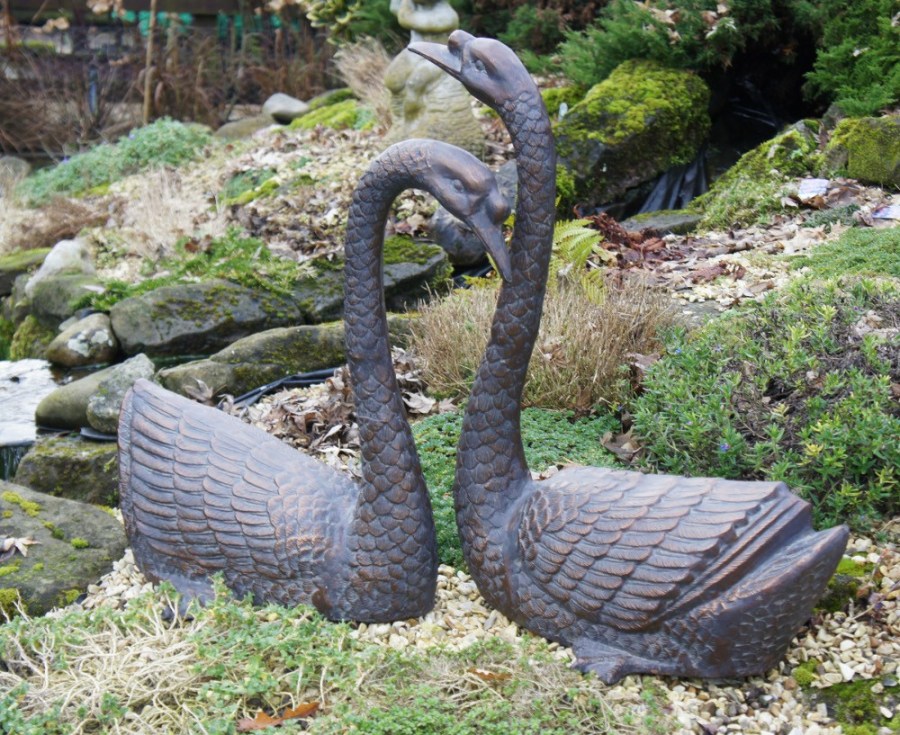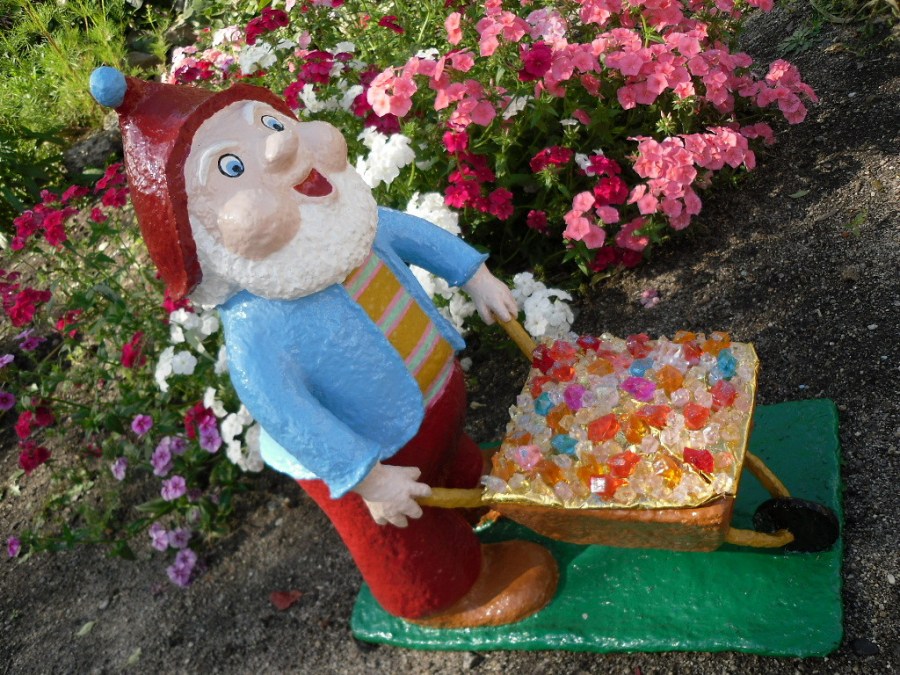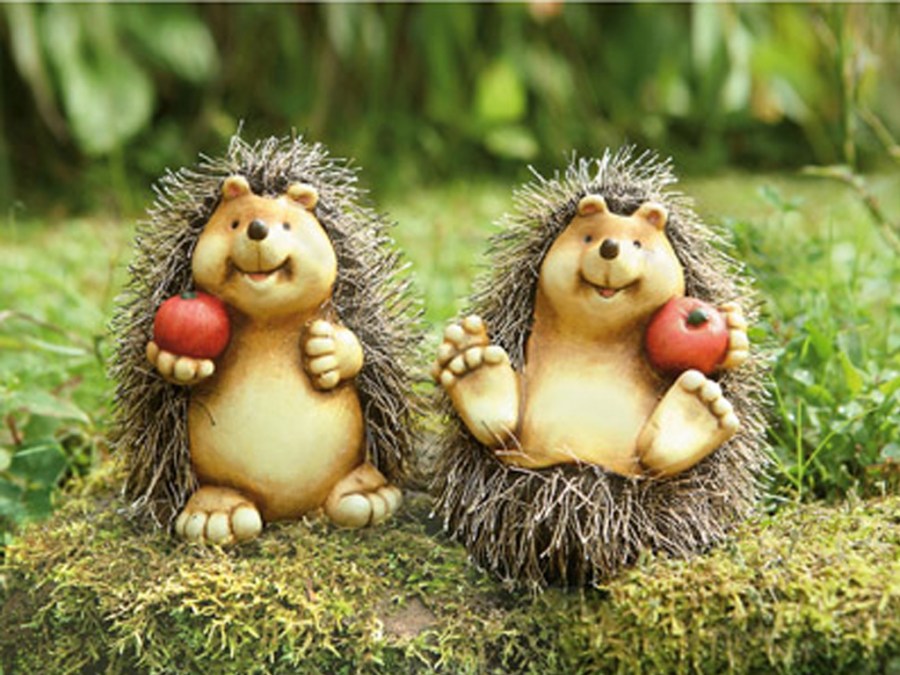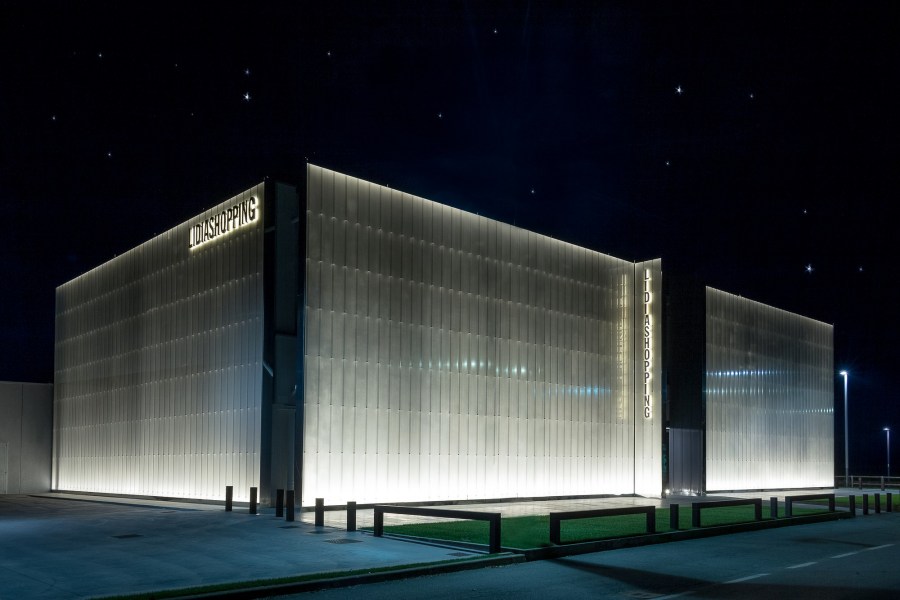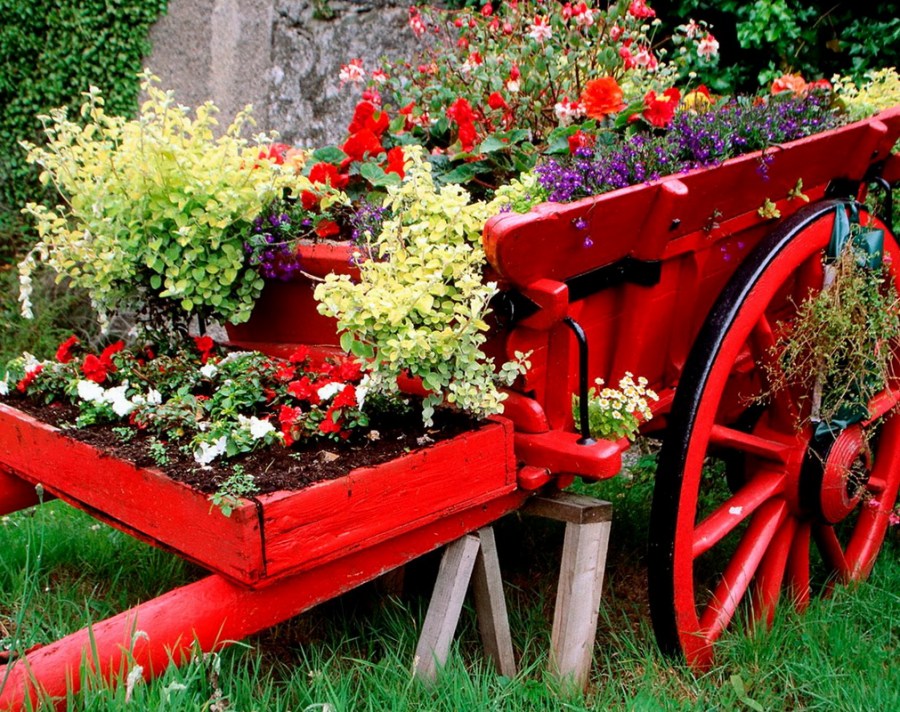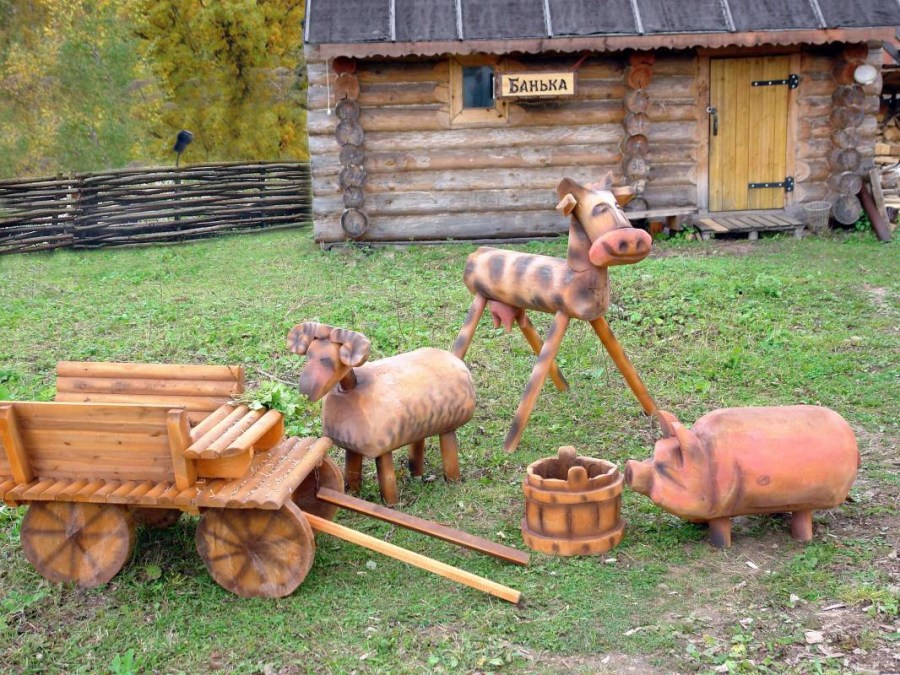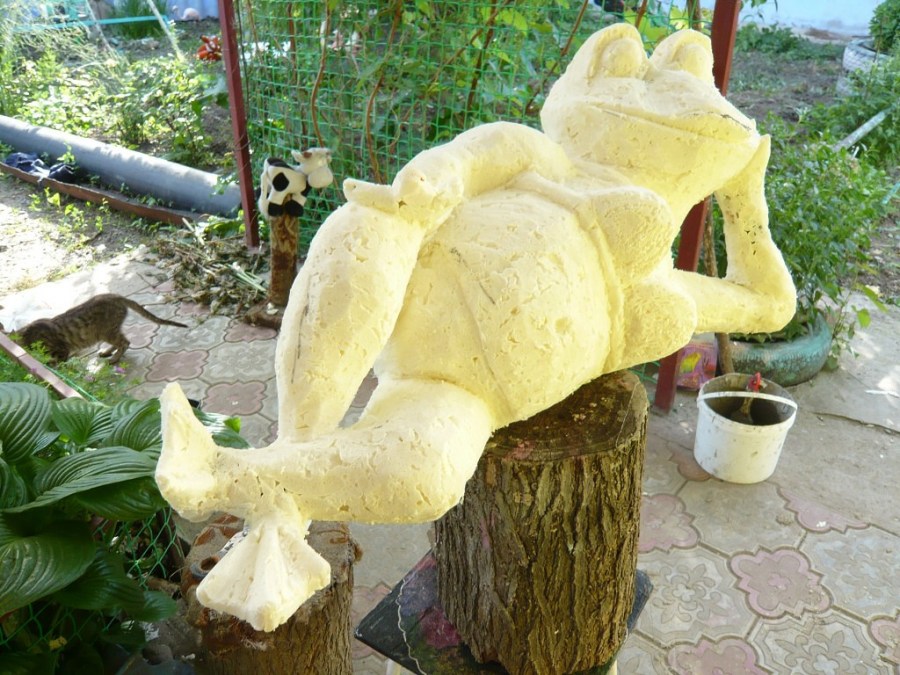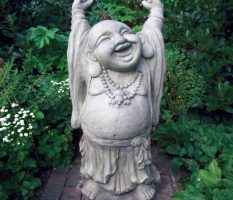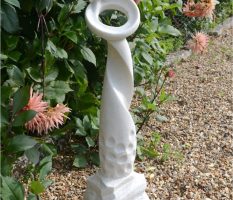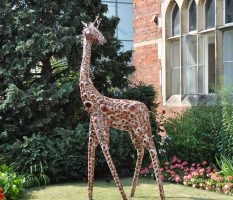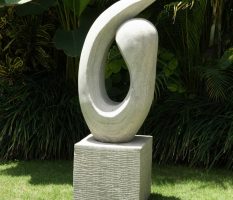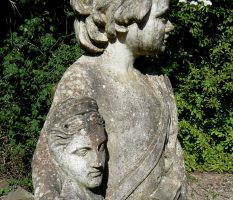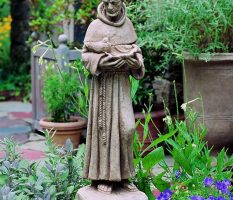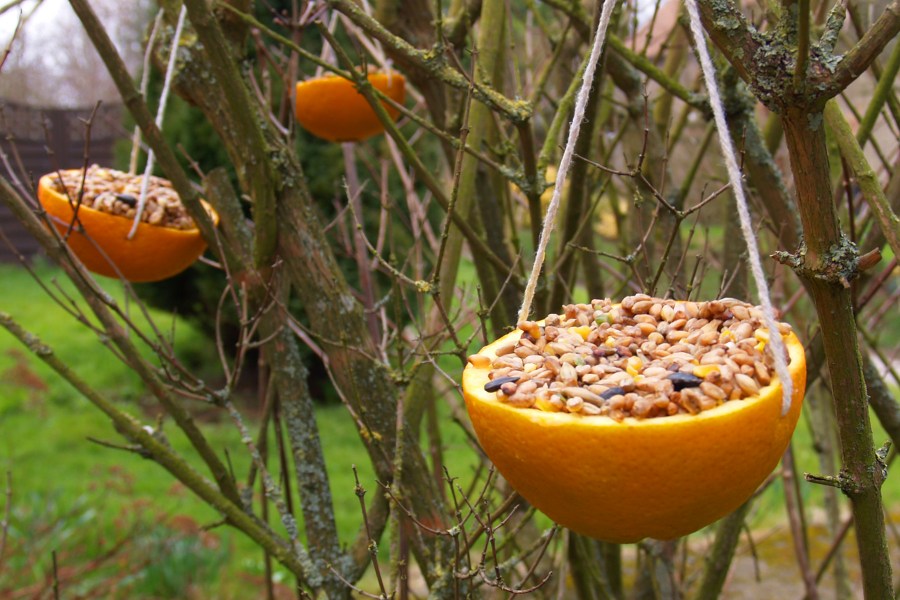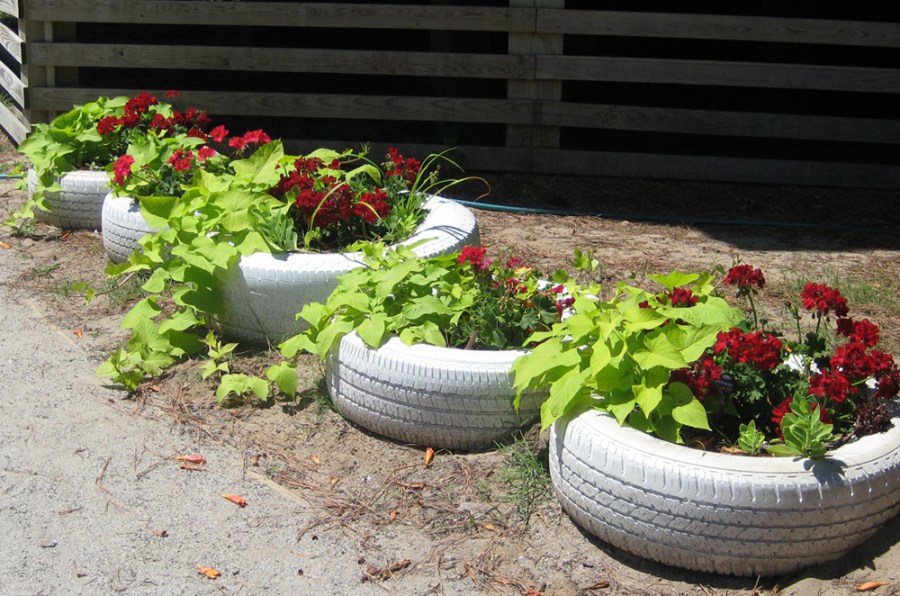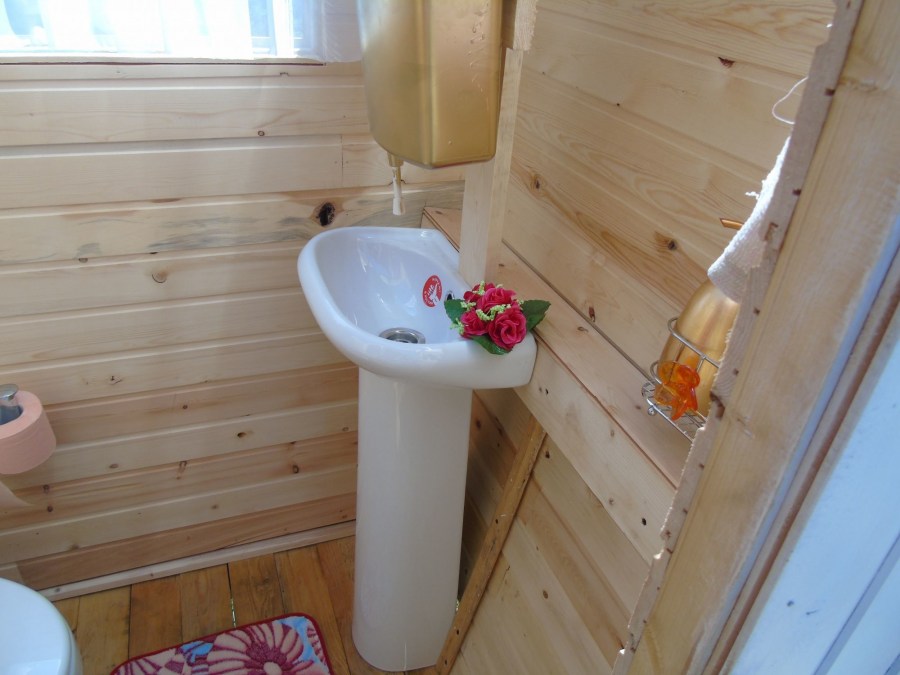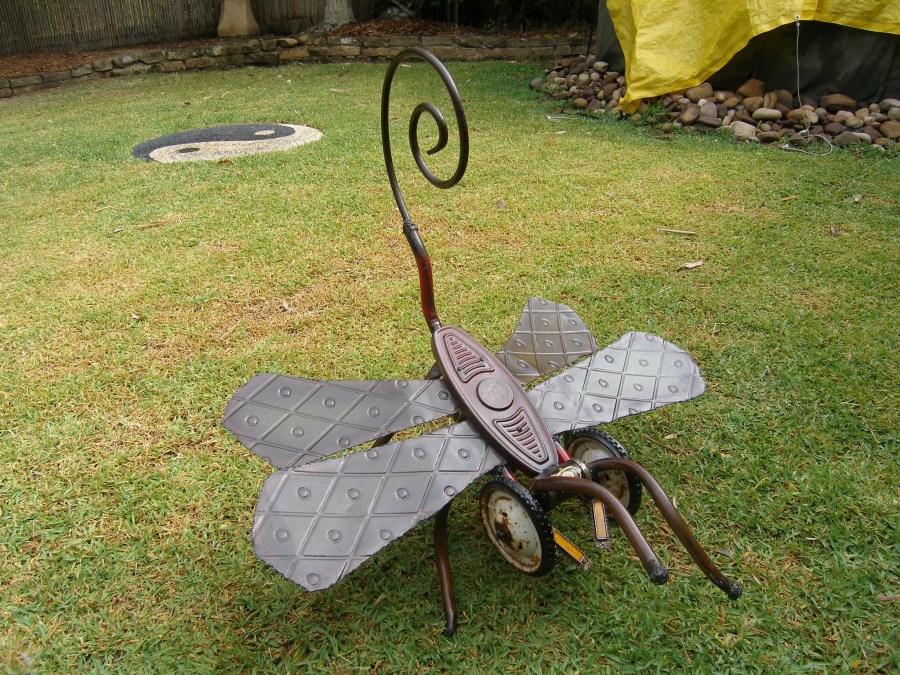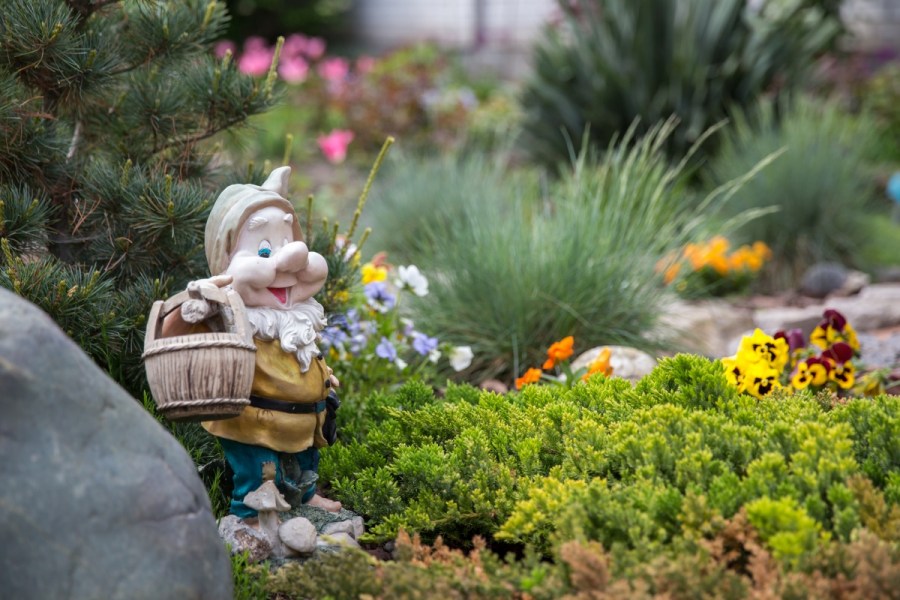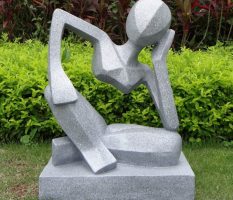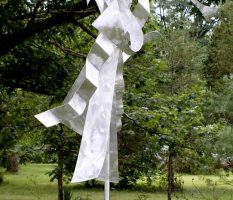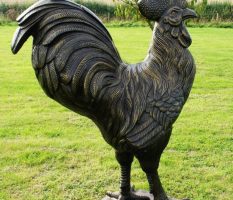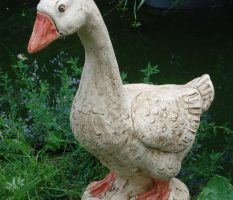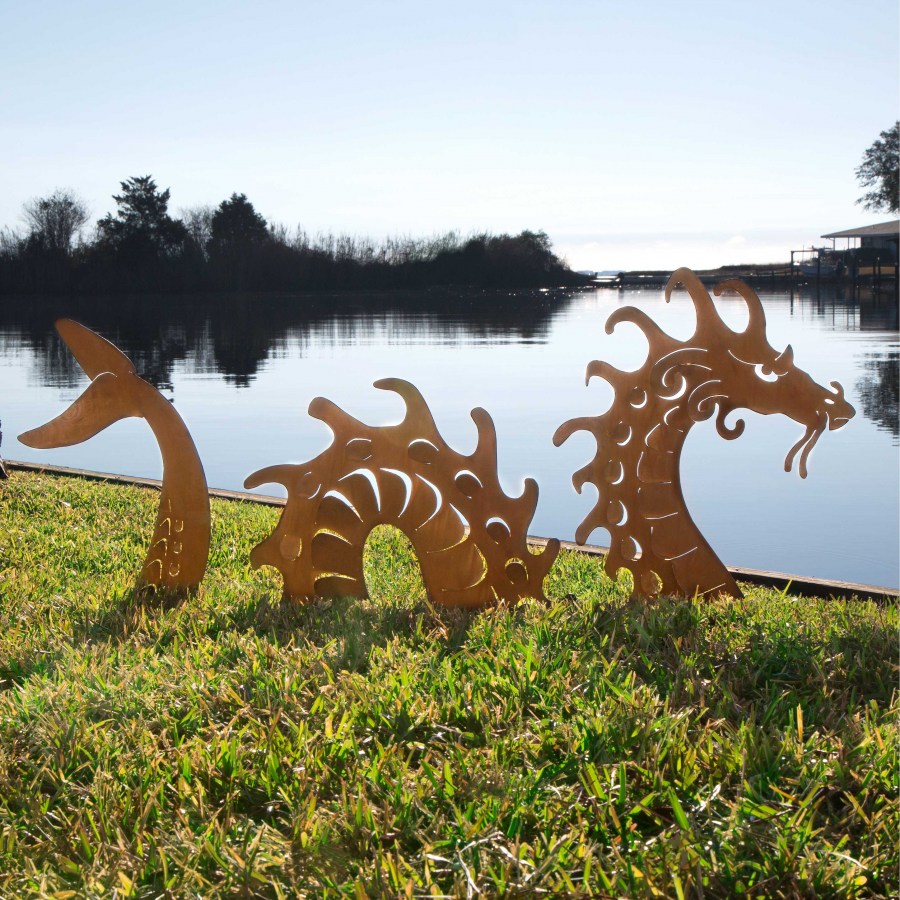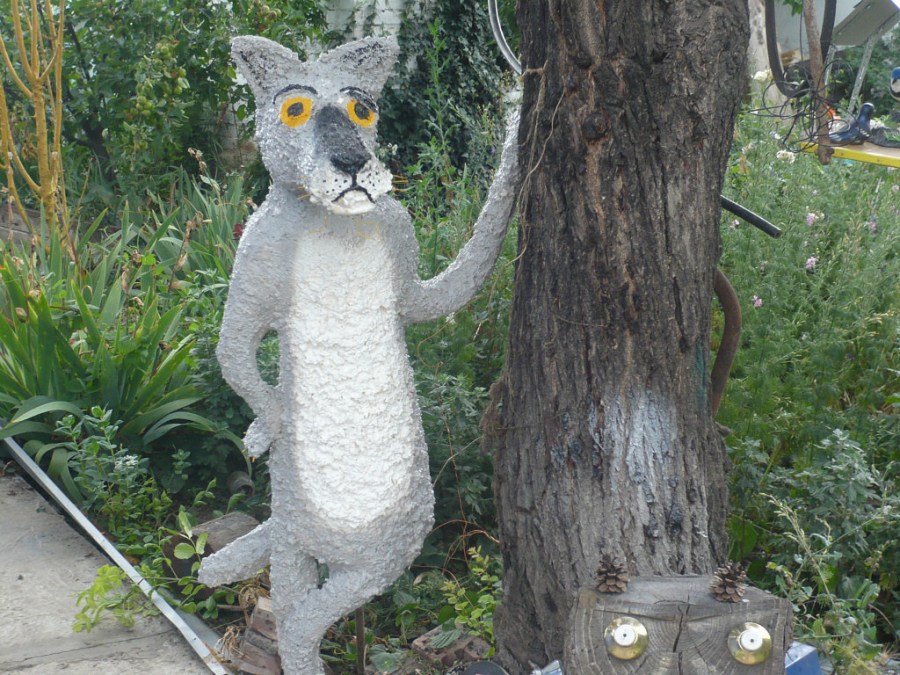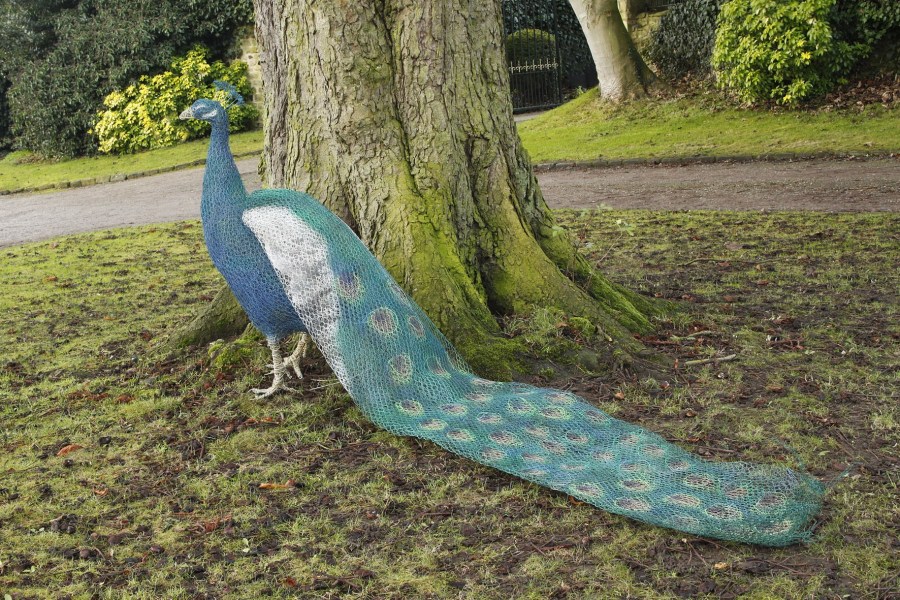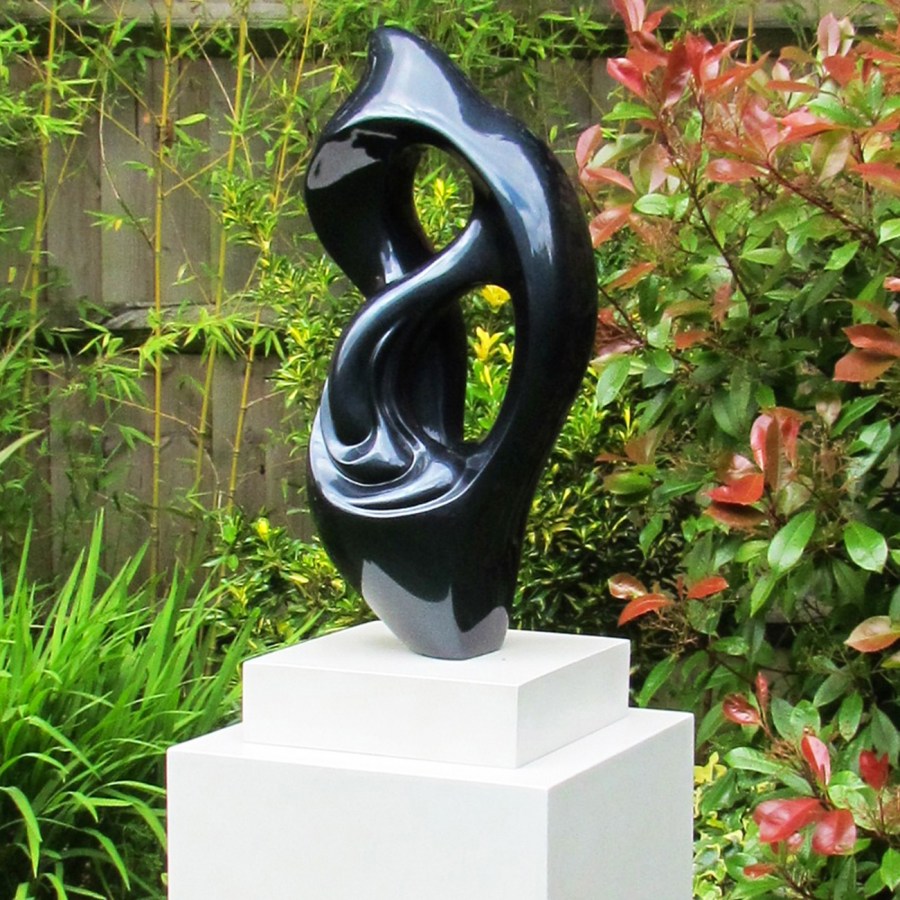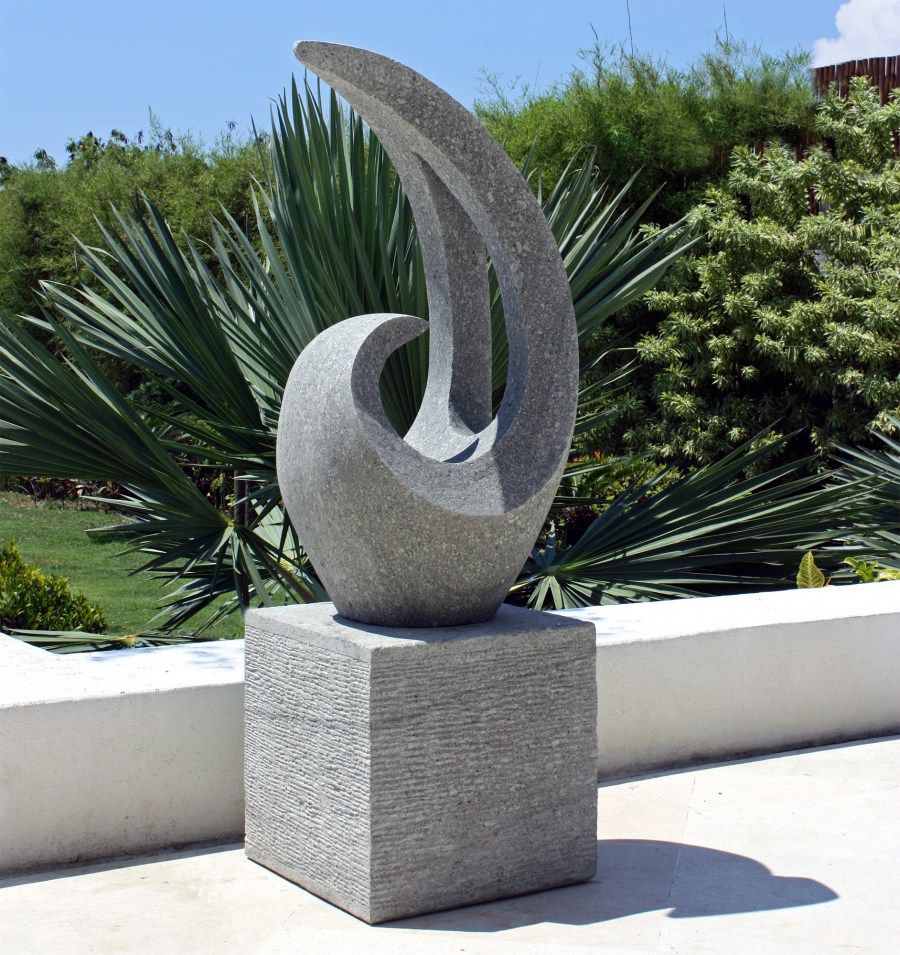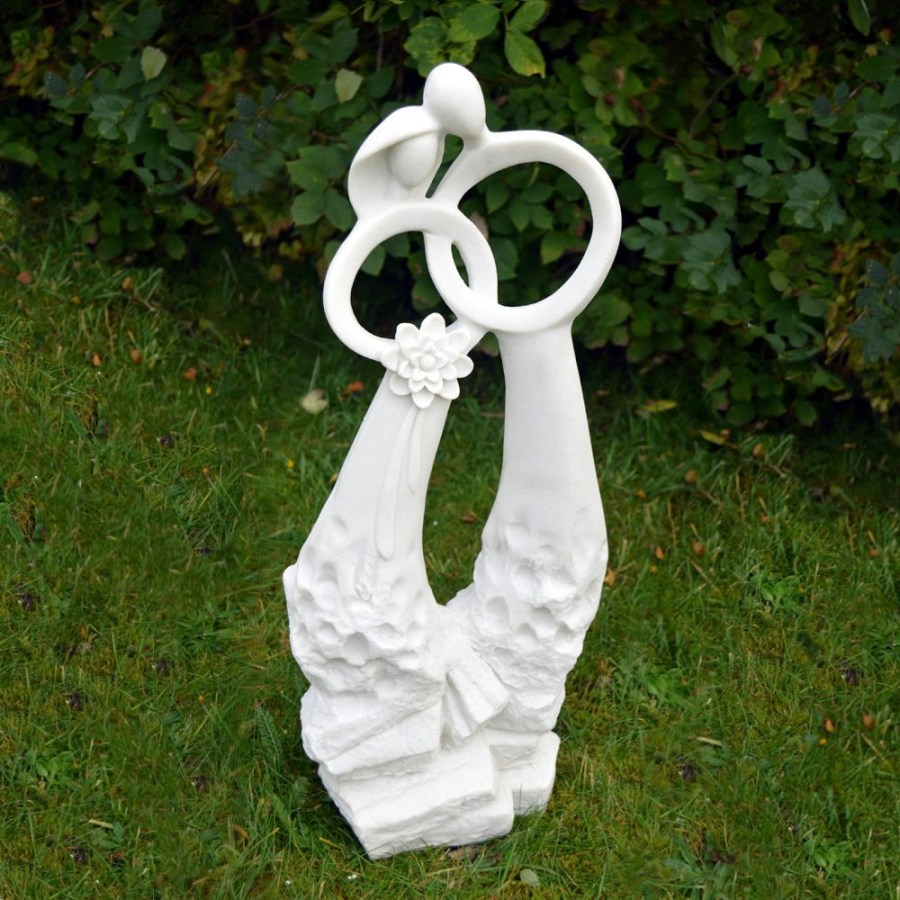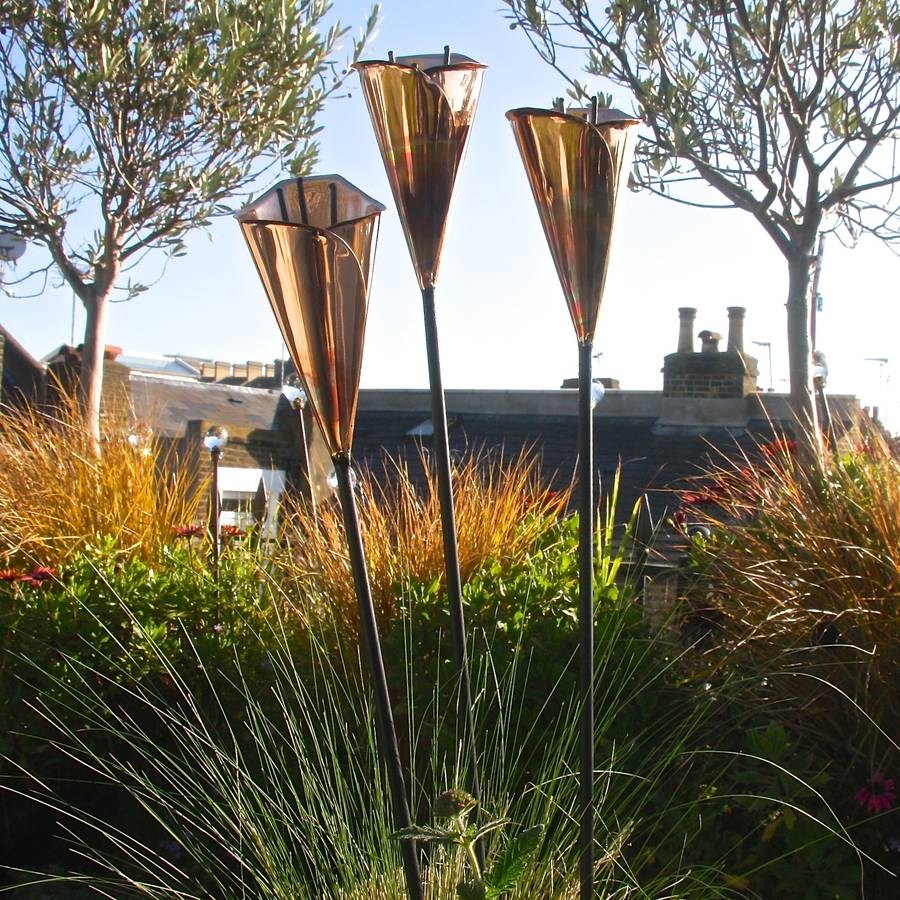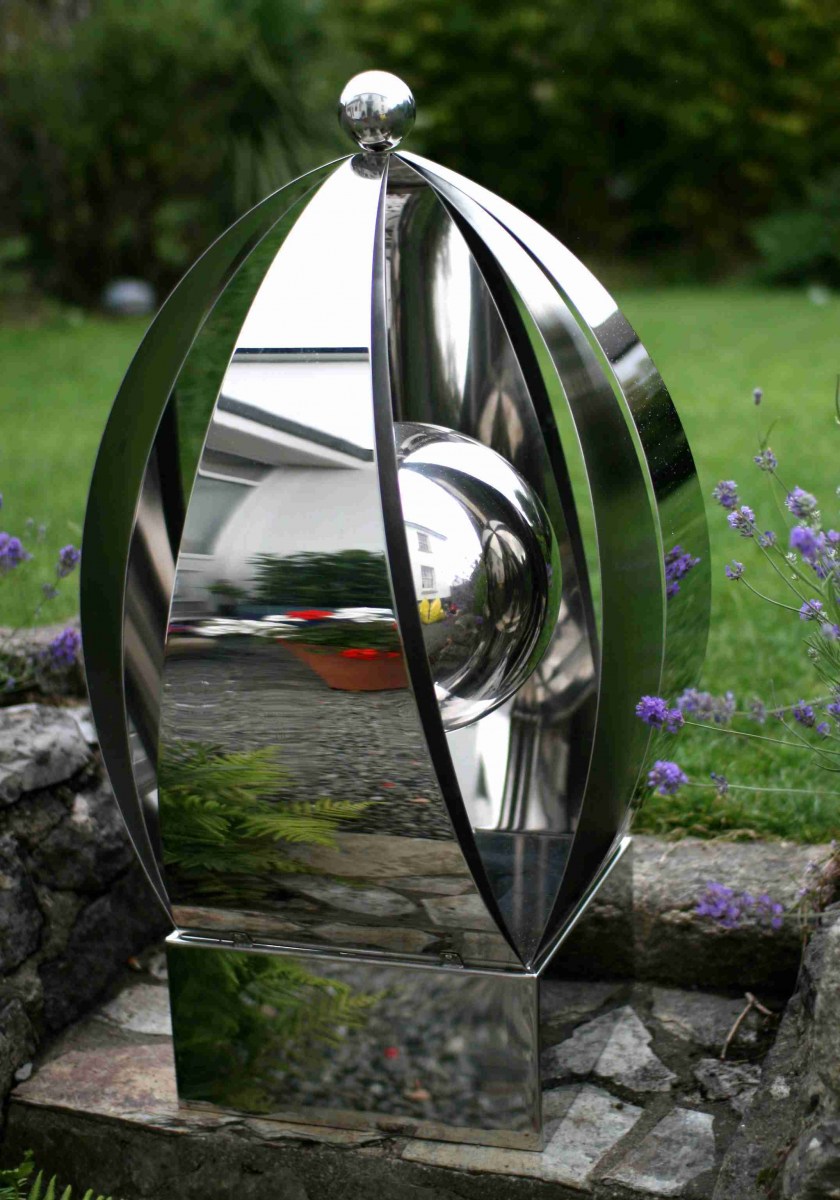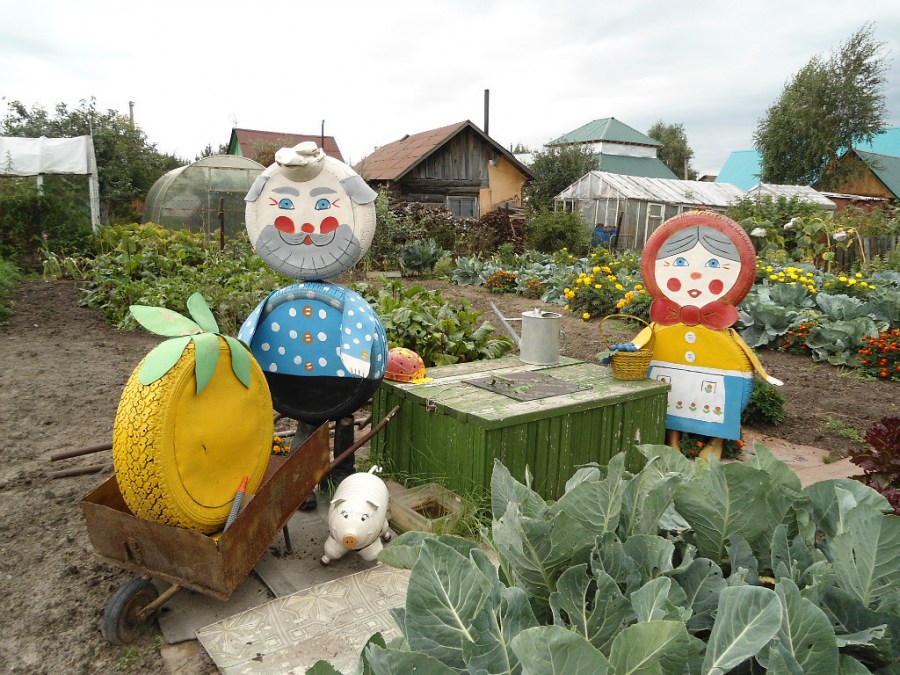Garden sculptures - original architectural elements, sculptures and decorations (120 photos)
The garden is the face of every private home. Each hostess wants to create a unique image of her plot. Often you want to see not just a well-groomed garden, but also create something unique. To diversify the riot of flowers or decorate the lawn, sculptures for the garden are well suited. They can both emphasize its color and become the basis for the design of the entire site.
Sculptures for garden decor in a huge assortment are sold in special stores "Everything for the garden". Also, many prefer to create a sculpture on their own.
Materials
The most common materials for making garden figures are gypsum, wood, concrete, natural stone, polystone and metal. Sculptures from plants - topiary - are also gaining popularity.
Each of these materials has its pros and cons. To make the right choice when buying a product, you should know their main characteristics.
Gypsum sculptures are fragile enough and require careful care to maintain their structure. The advantage of the material is its low price and the ability to use at home for self-production of figures.
It is important to remember that in the manufacture of large gypsum figures, you will need a metal frame and the base of the product to enhance their stability.
Wood is used to create unusual, vibrant compositions. The material is readily available and is easy to process. So that your wood sculpture does not succumb to rotting, the appearance of parasites and fungi, treat it with special chemical compounds at least once a year, and then cover with varnish or your chosen paint.
A good solution is to remove the sculpture for winter time in a garage or any other room without strong temperature extremes and high humidity.
Concrete is a very strong material with an interesting structure. It is suitable for independent work and has a fairly affordable price. In order for a concrete sculpture not to crumble in a couple of years from the effects of temperature and humidity, it is important to update its protective coating more often.
For the manufacture of sculptures made of natural stone, granite and marble are usually used - beautiful, wear-resistant materials. They emphasize the high status of the owner of the products. These types of stone are very expensive and fit only under the classic or antique garden design.
A more budgetary option are sandstone products. They are quite strong and durable, while their price is much lower.
The unusual name polystone hides an artificial stone based on acrylic resin. Due to the fact that the material is completely homogeneous, does not have microcracks and pores, products made of polyresin are not exposed to moisture, frost and direct sunlight.
Another plus is the ability to manufacture products with small details - thanks to the excellent strength of the sculpture, they will last more than one season without damage.
Metal sculptures are rarely used in private household plots. Most often, copper and bronze, durable and effective-looking metals, are used to create figures. A well-designed, refined composition made of bronze is not a cheap choice, but such a decoration will last for decades, without losing its attractiveness.
Thanks to the correct pruning, a garden shrub or tree can become a garden sculpture. Previously, we could only see photos of these garden sculptures in Western magazines and catalogs.Now there is an opportunity to invite a professional who, thanks to a careful, correct pruning of the crown, will create the figure you set for a lot of money, or you can do a similar job yourself.
It is enough to do with your own hands the frame of the desired size and shape, fill it with high-quality soil and plant seeds in it. After the seeds have sprouted, you just need to cut the plants, maintaining the shape of the sculpture.
The form
Despite the wide range of sculptures and statues for the garden, their selection still remains difficult. How to choose a sculpture that will not only be strong and durable, but will also fit well into the overall design of the site?
Try to withstand all the elements of the garden in one style. For example, wooden compositions, figures of animals and birds are more suitable for a rural landscape, and for a refined garden with many flowers, use plain white figures of people or plants.
Do not strive to make sculpture the center of your garden. Let it be a bright accent, and not the basis of design.
To determine the location of the sculpture, make a sketch on a full-size cardboard.
Large sculptures harmoniously look next to curly shrubs, tall trees and fountains. Small figures on the contrary look better in an open area: on a lawn, near flower beds and decorative fences.
Homemade sculptures
To get the perfect figure for the design of your garden, you don’t have to spend many hours in stores and give a lot of money. If you wish, you can make a garden sculpture with your own hands. It is easiest to work on your own with concrete, wood and gypsum.
Concrete sculptures
To make a concrete product, you will need:
- Cement
- Sand
- Thick wire
- Water
Protective impregnation for concrete (based on acrylic, polyurethane or epoxy)
First bend the frame of the future figure from thick wire. This will help you easily create a product and strengthen it. Mix cement and sand (3: 1), add water according to instructions. Apply the resulting solution to the frame in layers.
The pour time of the solution depends on the ambient temperature. In the hot season, it hardens in 3 days (at a temperature of 25-30 degrees), in the colder - about 5.
You can not work with concrete on the street or indoors, if the temperature is less than 10 degrees - the cement mortar will not be able to solidify properly and the product will quickly become worthless. After the solidification of the figure completely, cover it with a protective spray or impregnation. This will save your creation for a long time.
Gypsum sculptures
For the manufacture of gypsum products, you must have:
- Dry gypsum
- Water
- PVA glue
- Moisture resistant glue
- Paraffin or petroleum jelly
- Sifted clay
- Waterproof paints (preferably acrylic)
Plaster is well suited for "cloning" existing sculptures. First, a mixture is made of clay and water, into which an existing product will be pressed. Adjust its density so that the mixture is elastic, does not flow and is not too dry. Make a cast of the required product on both sides and leave to dry for a day.
Do not put clay casts in the sun - quick drying will cause the clay to burst, which will render the cast unusable. If small cracks occur, they can be coated with plasticine.
After the clay has dried, it is necessary to prepare a gypsum solution of the consistency of thick sour cream. So that the figure can please you much longer, replace 10-20% of water with PVA glue - this will make the solution much stronger. Lubricate both molds with paraffin or petroleum jelly from the inside (this will help you easily pull out the halves of the sculpture), then fill in the gypsum.
Leave the gypsum to dry in a warm room for a day. After process the roughness and roughness at the joints and connect them with waterproof glue. After that, you can begin to decorate the figures.
Wooden sculptures
To create a wood product you need:
- Wooden blank of the right size
- Woodworking tools
- Fine sand paper
- Impregnation from parasites, mold and rot
- Primer
- Paint or varnish
For beginners, blanks from trees such as pine or birch are well suited - they are easy to process and at the same time quite durable.
Here you can turn on your imagination and cut everything you want from a tree - flowers, animal figures or fairy-tale creatures. The main thing is the final processing of the product.
 Saturate the wood with mold and parasite compounds, primer and only after that apply paint - this will help preserve the fruit of your efforts for many seasons.
Saturate the wood with mold and parasite compounds, primer and only after that apply paint - this will help preserve the fruit of your efforts for many seasons.
Do not be afraid to experiment with materials, shapes and processing methods. A little imagination and free time will help make your garden a small fabulous island that will delight others with its beauty and originality.
Photo of garden sculptures
Garden sculptures: 120 photos of options for unusual shapes and decoration features
Land styles: 130 photos of the main species and their modern features
Perennial flower beds - 85 photos of planting patterns and features of continuous flowering
Join the discussion:

